#1980 renault le car
Text

1980 Renault Le Car
#1980 Renault Le Car#renault#le car#1980#1980s#vintage#ad#ads#advertising#advertisement#vintage ad#vintage ads#vintage advertising#vintage advertisement
75 notes
·
View notes
Photo

Le Car translate into The Bus. More like The Busted All the Time.
1981
#vintage ad#vintage ads#advertising#advertisment#1981#le car#car ad#american motors#renault#1980s#1980s cars#1980s ad#1980's#80's ad#80's cars#funny#humor#humour
27 notes
·
View notes
Text
Indycar Driver Lore
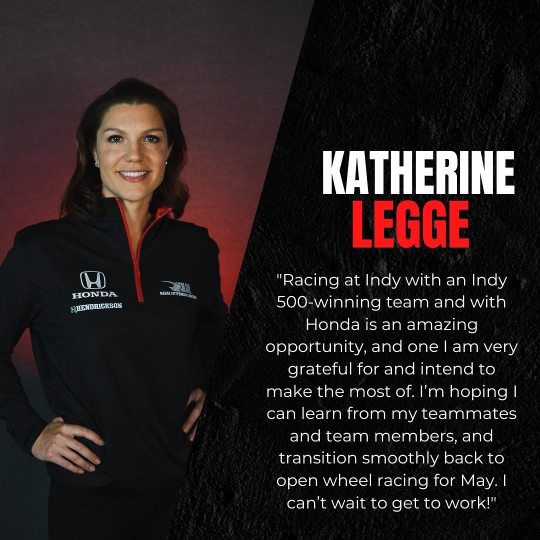
Indycar Driver Lore Masterlist
Katherine Anne Legge
Birthdate: July 12, 1980
Hometown: Guildford, Surrey, England
Residence: USA
Height/Weight: 5’8”/132lbs
Rookie Year: 2006
Team: Dale Coyne Racing (Indy 500)
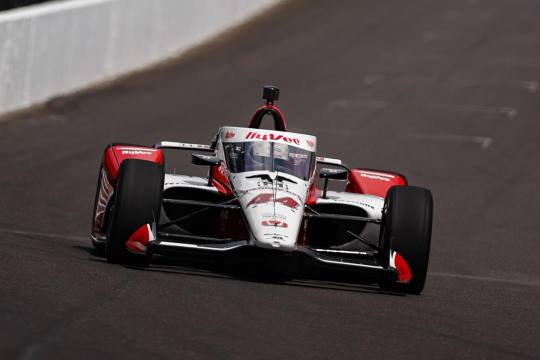
Follow her on: Instagram Twitter
Career Stats
Champ Car
2006: PKV Racing - 16th Overall
2007: Dale Coyne Racing - 15th Overall
Indycar
2012: 10 races with Lotus-Dragon Racing/Dragon Racing - 26th Overall
2013: Schmidt Peterson Hamilton HP Motorsports (Indy 500) - 26th
2023: Rahal Letterman Lanigan Racing (Indy 500) - 33rd
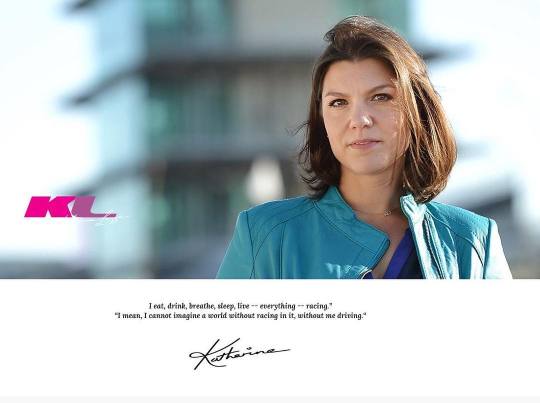
IMSA
2014: DeltaWing Racing Cars P class - 19th Overall
2015: DeltaWing Racing Cars w/ Claro/TracFone P class - 8th Overall
2016: Panoz DeltaWing Racing/Michael Shank Racing w/ Curb Agajanian P class - 10th Overall
2017: Michael Shank Racing GTD class - 6th Overall
2018: Michael Shank Racing w/ Curb-Agajanian GTD class - 2nd Overall
2019: Heinricher Racing w/ Meyer Shank RacingGTD class - 9th Overall
2020: GEAR Racing powered by GRT Grasser GTD class - 57th Overall
2021: Team Hardpoint EBM GTD class - 9th Overall
2022: Team Hardpoint GTD class - 16th Overall
2023: Gradient Racing GTD class - 11th Overall
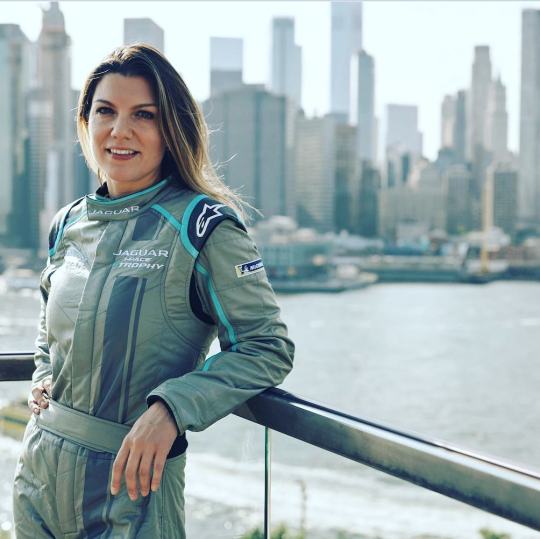
Introducing IndyCar hopeful Katherine Legge
Champ Car Road America 2006 - Kathrine Legge horrific crash
Up Close Katherine Legge
Katherine Legge: "It doesn’t matter – whether you’re male or female, black or white"
Katherine Legge – Up To Speed | Mobil 1 The Grid
Katherine Legge Returning to the Indy 500 | Women In Motorsports
Katherine Legge on W Series
Katherine Legge | The First Female Formula E Driver | Forgotten Formula E
ZF Fast Track Pop Quiz! With Katherine Legge & AJ Allmendinger
Katherine Legge enters the field for the Indy 500
Katherine Legge Is A British auto racing driver | Pitstop | Episode 68
Katherine Legge and her Ice IndyCar
Talking to Katherine Legge

Katherine Legge’s motorsports resume includes experience in Formula 3, Formula Renault, a Formula One test, Champ Car, INDYCAR, A1GP, DTM, Formula E and sports car racing. Legge was the first woman to win pole in a Zetec race in 2000. One year later she won BRDC’s “Rising Star” award.
In November 2005 she became the first woman to test a Formula One car since Sarah Fisher in 2002. Legge competed in the Toyota Atlantic Championship in 2005, winning the series opener in Long Beach in her first career start to become the first woman to win a developmental open wheel race in North America. She finished the 2005 Atlantic season third in the championship with three wins and five podiums. She moved up to PKV Racing in Champ Car in 2006 and became the first woman to lead a lap in that series when she led Lap 12 at Milwaukee and went on to earn an Indy car career best finish there of sixth. She later had a massive crash at Road America but was largely uninjured and able to compete in the final two races of the season. She competed for Dale Coyne Racing in 2007 and matched her best series finish of sixth at Long Beach and earned her best Indy car start of eighth, twice, before returning to Europe to compete in the DTM touring car series from 2008-2010 where she was an Audi factory driver. After a one-year hiatus from racing, she joined Dragon Racing’s INDYCAR SERIES team in 2012 but a short-lived Lotus program led to the team only being able to secure one Chevrolet engine for two drivers and Legge only competed on oval tracks.
She moved to the Delta Wing sports car program from 2013-2015 and also competed in two Formula E races with Amlin Aguri in the 2014/2015 season. She spent three seasons with Meyer Shank Racing from 2017-2019 in a factory-backed Acura GTD program and earned four wins and 11 podium finishes – including the first win worldwide for NSX in Detroit in 2017. In 2020, she competed in the Rolex 24 at Daytona in a Lamborghini in the GTD class before switching her focus to a European-based racing program. She signed with Richard Mille Racing to take part in the 2020 European Le Mans Series and 24 Hours of Le Mans in the LMP2 prototype category but was injured in a pre-season testing crash after a tire failure at the Paul Ricard circuit and missed the remainder of the season while recovering from her injuries. In 2021-2022, she returned to IMSA as lead driver for Team Hardpoint, driving a Porsche 911 in the GTD class and currently competes in an Acura NSX in the GTD class for Gradient Racing in 2023. She and her co-drivers recently finished fourth in class at the Rolex 24 at Daytona.
In her free time, Katherine is a Girl Scouts STEM Ambassador and enjoys skiing, cycling, training and competing in triathlons, yoga and is a vegan athlete. Legge is the second female race car driver to compete for RLL. Danica Patrick competed in the Atlantic Series with the team from 2003-2004 and in the IndyCar Series from 2005-2006.

Fanfic Lore
none

3 notes
·
View notes
Text
Renault 5 turbo, not a Le Car. Motor Trend March 1980

4 notes
·
View notes
Text
Jean-Pierre Jabouille: First Renault driver to win a Formula 1 grand prix dies aged 80
Jean-Pierre Jabouille, right, with Renault team-mate Rene Arnoux at the 1979 French Grand Prix, where he earned Renault's first victory in Formula 1
Former Grand Prix driver Jean-Pierre Jabouille, the man who took Renault's first Formula 1 win, has died aged 80.
The Frenchman was a key part of Renault's 1977 entry into Formula 1 - and they were the first manufacturer to use a turbocharged engine.
Jabouille took Renault's maiden win in the 1979 French Grand Prix.
His final victory came in Austria in 1980, but his career was ended later that year when he broke a leg in a crash in Canada.
He had been in any case due to leave the Renault team because his seat had been taken by rising star Alain Prost for 1981.
Jabouille tried to return with the Talbot Ligier team, but was clearly unfit and retired as a driver after failing to qualify for two of his four attempts.
The Alpine team, owned by Renault, said in a statement that it was "incredibly saddened" by Jabouille's death.
"A humble racing driver, brilliant engineer and a pioneer of our sport. Jean-Pierre was a true racer.
"He spearheaded Renault's journey into F1 in 1977 with his resilient and dare-to-do attitude. He was Renault's first Grand Prix winner in 1979, a landmark moment in Renault's journey in Formula 1.
"His determination and dedication to succeed inspired many, and these values remain central to the current team in its now blue colours of Alpine.
"We are where we are today because of Jean-Pierre and his legacy lives on."
Jabouille, an engineer by trade, joined the Renault F1 project from its start to help develop its new turbo engine.
At the time, F1 was dominated by naturally aspirated three-litre V8s but Renault was the first to see the potential of an equivalence formula that permitted the use of 1.5-litre turbos.
Initially, the car was a laughing stock, dubbed the "yellow teapot" by British rivals because of its poor reliability.
But the engine was immediately more powerful than the V8s used by other teams. Assiduous work improved the engine's reliability and, by 1979, the team also had a competitive chassis.
Their maiden victory could not have come in more ideal circumstances for a team representing France's national car company: it came on home soil at Dijon-Prenois, with a French driver in a French car with a French engine using French Michelin tyres.
Jabouille in the Renault F1 car at the 1979 US Grand Prix
The sadness for both Jabouille and Renault is that the race was destined to be more famous for the gripping racing between his team-mate Rene Arnoux and Ferrari's Gilles Villeneuve for second place.
One of the greatest duels in F1 history was eventually settled in Villeneuve's favour after a final few laps marked by improbable overtaking moves, regular position swaps, off-track moments and wheel-banging incidents.
Jabouille had earlier in the season taken the team's first pole position, aided by the high altitude at the South African Grand Prix at Kyalami, and he took two further poles that year in Germany and Italy, although poor reliability prevented any further wins.
In 1980, Jabouille took two more poles along with his win in Austria, while Arnoux won twice in South Africa and Brazil.
After his retirement from F1, Jabouille was briefly a manager at the Ligier team, before stepping away.
He returned as head of the ill-fated Peugeot engine programme in the 1990s.
Peugeot, fresh from winning Le Mans in 1993, joined forces with McLaren for 1994, but the relationship was a tense one and it ended early - after just one season of poor performance and reliability. Peugeot switched to Jordan from 1995-97 and then to Prost's team from 1998 before withdrawing at the end of 2000.
via BBC Sport - Formula 1 http://www.bbc.co.uk/sport/
#F1#Jean-Pierre Jabouille: First Renault driver to win a Formula 1 grand prix dies#aged 80#Formula 1
3 notes
·
View notes
Text
Gli altri sport: Frank Williams

Un uomo che visse più di una vita, nel mondo dell’automobilismo internazionale…
Francis Owen Garbett Williams, conosciuto come Frank, nacque il 16 aprile 1942 a South Shields, in Inghilterra e il padre era un ufficiale dell’aeronautica militare, mentre la madre un’insegnante.
La sua passione per le auto nacque grazie alle sue amicizie, che lo introdussero nel mondo delle automobili e da lì decise di intraprendere la carriera da pilota, che fu però abbastanza breve e priva di grandi successi.
Williams gareggiò principalmente in Formula 3 e in campionati GT, capendo dopo poco che quella del pilota non era la sua strada, capendo di essere un buon imprenditore e manager e nel 1966 fondò la sua scuderia, la Frank Williams Racing Cars.
Inizialmente la scuderia di Frank gareggiava principalmente in F2 e F3 e Williams decise di ingaggiare come piloti alcuni dei suoi amici, come Piers Courage, che nel 1968 portò la Frank Williams Racing Cars a vincere il campionato in F2.
Dopo un paio di stagioni, nel 1969 Frank passò con la sua scuderia in F1, riconfermando il suo pilota Courage, serie ottenne due podi e terminò la stagione ottavo in campionato.
Nella sua carriera da dirigente della Williams, Frank vide la morte più di una volta e la prima di fu proprio quella del suo amico Courage, che morì nel 1970 nel Gran Premio d’Olanda.
Nei primi anni in F1 la scuderia Williams non produceva le proprie vetture, ma si affidava ad auto provenienti dalla Brabham, March e Alejandro de Tomaso e solo dal 1972 iniziò a a costruire le proprie vetture, dando vita alla Politoys FX3.
Inizialmente, la gestione della scuderia non fu facile per Frank, che dovette affrontare dei gravi problemi finanziari, e nonostante l’aiuto di colossi come Marlboro e Iso Rivolta e, tra il 1969 e il 1975, Frank non vide mai nessuno dei propri piloti salire sul podio.
Nel 1976 Williams vendette il 60% della sua scuderia a Walter Wolf, un magnate petrolifero, che diede anche il nome alla scuderia, cambiandolo in Walter Wolf Racing e un anno dopo abbandonò definitivamente il timone della sua scuderia, non sentendosi più parte di essa.
Frank però non si diede per vinto e chiese aiuto al suo ingegnere di fiducia Patrick Head, con cui creò la Williams Grand Prix Engineering, puntando sul talento di Alan Jones e Clay Regazzoni, che terminando il campionato in seconda posizione nella classifica costruttori.
La competitività del team diventò evidente agli occhi di tutti nel 1980, quando Alan Jones vinse il mondiale e, insieme a Reutemann, portò a Frank anche la vittoria campionato costruttori, così come nella stagione successiva.
Frank nel 1983 affidò la produzione dei suoi motori alla Honda, che con le sue idee per un motore turbo convinse la Williams a stipulare un accordo e la scuderia tornò a vincere il campionato costruttori nel 1986 con Piquet e Mansell con la FW11.
Il 1986 fu per Williams un anno davvero difficile dato che, mentre si trovava in Francia e stava andando all’aeroporto, perse il controllo dell’auto, che si ribaltò su se stessa e subì la rottura della spina dorsale e fu costretto a vivere per il resto della sua vita su una sedia a rotelle.
Nel 1986 la squadra vinse il titolo costruttori e anche quello piloti con il brasiliano Piquet, anche se ci fu l’abbandono della Honda, che non riponeva più fiducia nella scuderia e la fornitura dei motori fu affidata alla Renault, che divenne un valido alleato.
Negli anni della collaborazione con la Renault la Williams vinse cinque volte il campionato costruttori e quattro volte quello piloti, con piloti del calibro di Mansell, Prost, Hill e Villeneuve.
Quando il 1 maggio 1994 Ayrton Senna morì nella tragedia del circuito di Imola, Frank venne indagato per omicidio colposo, ma fu poi assolto.
Intanto la Renault abbandonò la Williams, che trovandosi in difficoltà, trovò nella BMW la fornitrice dei propri motori, ma negli anni della loro collaborazione non arrivò nessun titolo mondiale.
Gli anni successivi furono difficili e le due stagioni dove la Williams tornò a farsi vedere furono quelle con Massa e Bottas nel 2014 e 2015, che non andarono oltre un terzo posto nel mondiale costruttori.
Dal 2016 in poi la Williams risprofondò nelle ultime zone della classifica, entrando in una vera e propria crisi dal 2018.
Nell’estate del 2020 il fondo statunitense Dorilton Capital comprò il team e, pochi mesi dopo, Frank e la sua famiglia annunciarono il loro abbandono della società, chiudendo un’era durata per ben 43 anni.
Il 28 novembre 2021 Frank Williams morì a Londra all’età di 79 anni, lasciando un’eredità unica nel mondo delle corse, la sua scuderia resta infatti la quarta nella storia della Formula 1 come numero di successi, con nove titoli costruttori e sette titoli piloti vinti nella sua storia.
Read the full article
0 notes
Photo


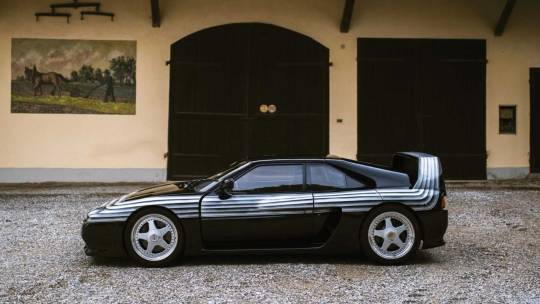


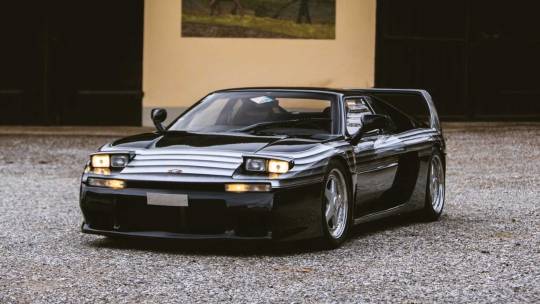
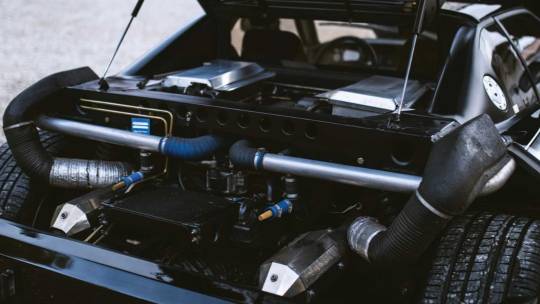
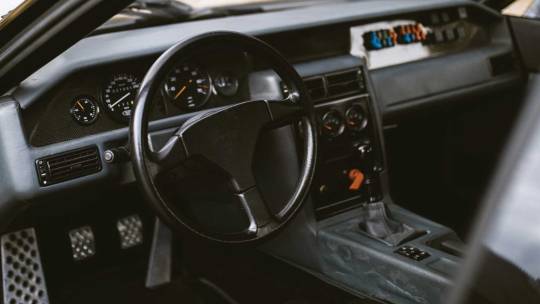

Venturi 400 GT Trophy
Venturi’s most exciting car, the 400 GT, was introduced in 1992. With performance to match its looks, the 400 GT was not only the most powerful car ever built in France at the time of its introduction, but the first production car with carbon ceramic brakes as standard. Boasting a V-6 engine developed jointly by Peugeot, Renault and Volvo producing 400 bhp, performance was astounding, especially when considering it weighed under 1,200 kg, some 225 kg less than a Ferrari F355.
For a brief period in the late 1980s through the mid 1990s, it looked as if Venturi would realistically become a serious competitor in the supercar arena. It certainly had the performance and motorsports chops, having secured a start at multiple 24 Hours of Le Mans and launched a successful one-make race series called the Venturi Gentlemen Drivers Trophy. Power came from a mid-mounted twin-turbocharged variant of the inescapable Peugeot-Renault-Volvo (PRV) V-6, the bones of which can be found in the back of the DeLorean DMC-12 and the Renault Alpine A310. In the 400 GT, the normally anemic PRV is boosted to just over 400 horsepower, routed to the rear wheels through a manual transmission.
Owing partly to Venturi's relative obscurity, there isn't much reliable info around the 400 GT, but it seems a number of the Trophy cars were converted to roadgoing spec with more interior amenities and day-to-day hardware. Still, these streetbound Venturis retained much of the original performance and race-ready gear.
70 notes
·
View notes
Photo

“Le car, est un nom de merde.”
- Iconoclastic Archivologist
11 notes
·
View notes
Text
Advertising in Wikipedia
The advertising is a form of communication mass, whose goal is to fix the attention of a target sight ( consumer , user, user, voter, etc. ) to encourage them to adopt a desired behavior: buying a product, election of a political figure, incentive to save energy, etc.
Mentioning, for example, the name of a company, a store, or even a brand, does not automatically imply an act of advertising. But it becomes so from the moment the intentionally sought goal is to draw attention to the object evoked and / or to suggest going to such and such a place.
The "pub" (the apocope has become a synonym in its own right) is not limited to consumer goods or services . It can also promote men or women , praise a tourist spot, a government organization as well as sporting or cultural events . Advertising can aim to change behavior or promote values considered to be positive or beneficial in society, warn against drugs, encourage respect for the environment, or even promote road safety.
"Neither science nor art", advertising is largely empirical technique that borrows from the economy , to sociology and psychology , which tests his insights via the panels and market research. Creativity is at the heart of it, but it is not an art. It lacks gratuitousness and objectivity . If it can become, it is not the primary goal of its sponsor who seeks, him, in the first place, to convey a message (sell, incite, act, etc. ).
The issue of comparative advertising remains a hotly debated topic today: while the concept itself meets with real resonance with the public and consumer associations , the concrete implementation of the idea remains controversial.
The majority of authors compare or assimilate advertising to a phenomenon of propaganda specific to contemporary societies. Within society, it increases exchanges and accelerates the diffusion of new products or technical innovations and it represents a very important economic weight. Many national laws prevent its potential abuses. Products that are toxic or dangerous to health are prohibited from advertising in certain countries ( tobacco, for example) while at the same time the regulations protect certain categories of people, children in particular, by prohibiting pornographic advertising and by strictly regulating the advertising intended for them.
So-called “ antipub ” movements, denouncing the invasion of advertising, fuel criticism and propose various actions to “protect themselves”.
Propaganda and public opinion
Edward Bernays , born on November 22 , 1891, is an American advertiser. Although unknown to the general public, he is the father of institutional political propaganda . Nephew of Sigmund Freud , he was inspired by the work of the psychoanalyst for the writing of his book Propaganda, How to manipulate opinion in a democracy . Edward Bernays is transforming what we call communication today. At the time, advertising messages boiled down to praising the characteristics of a product, but Bernays used and took advantage of authority figures, mainly doctors, in order to promote his product more effectively and make it unique and indispensable for the consumer. .
During the constitution of the US Committee on Public Information , better known under the name of the Creel commission , many communication actions, harmless today, are used against the German army. The massive distribution of press releases, the use of cinema or even the use of the influence of opinion leaders have the effect of mobilizing crowds and shifting public opinion.
At the end of the First World War, Bernays, then an advisor in " public relations ", a term he coined in order to banish the negative connotation that the word "propaganda" referred to, was inspired by the work of his uncle and worked for the famous brand of American cigarettes Lucky Strike . The March 31 , 1929, Bernays is responsible for getting women to smoke tobacco. During a procession, the New York City Easter Parade (in) , it scrolls through a group of young models and their application to light "freedom torch" cigarettes, all in front of a large crowd of journalists and photographers . The event is a worldwide success.
From the advertiser to the "target"
In addition to advertisers, agencies and the “consumers” of advertising, various actors intervene, such as polling institutes, to refine, through market studies, the understanding of the market , to validate the positioning of the product and to test the effectiveness of advertising. in the finalization phase. The investment of sometimes colossal sums encourages ensuring the adequacy and perception of the advertising message before its broadcast.
Typically, the production of advertising spots is the work of production companies that make the films, the printing of posters or leaflets, the work of printers, etc.
Advertisers
Advertiser, in advertising parlance, refers to the company that seeks to promote its product. The analysis of advertising expenditure by advertiser shows a very concentrated distribution. In France, in 1987 4 , one thousand advertisers represented 90% of total advertising expenditure and twenty advertisers only 15% of this same total, foremost among which were the car manufacturers Renault and Peugeot , followed by Procter & Gamble which was then the leading advertiser in the world. global level 4 .
The vast majority of advertisers are commercial enterprises seeking to increase brand awareness and the sale of their products, but advertising is also used to raise funds to finance the activities of charities , museums and other cultural institutions in order to promote '' increase their attendance.
It is also used by governments to promote difficult topics that the media speak little or little about, road protection , promotion of heritage, promotion of professional equality between men and women, etc. Less visible to the general public, industry and service companies that sell to third-party companies also need to promote themselves and make their customers aware of the competitive advantage they have. This is the object of so-called “ business to business ” advertising .
read more, read more, read more, read more, read more, read more, read more,
read more, read more, read more
Agencies
An agency is a body made up of specialists responsible, on behalf of advertisers, for the design, execution and control of advertising actions.
The consulting agency sector is oligopolistic and dominated by five major players at the global level. In its 1993 edition, Le Publicitor noted: “the top five groups of agencies today have a market share that corresponds to 2/3 of the world market. The top twenty brands represent 90% of the world market 4 . ” Following the movement of concentration of the sector, in the years 1990 and 2000, the trend only strengthened, Saatchi and Saatchi , then world number two was bought by Publicis Groupe which also absorbed the number twelve d then, Leo Burnett Worldwide ;Young and Rubicam , then seventh is now part of WPP Group , just like Gray Global Group , then number nine.
Omnicom Group is the leader with US $ 12.7 billion in sales margin 19 , followed by WPP Group at £ 6.2 billion 20 . These two leaders are followed at a distance by Interpublic Group which posts 6.55 billion dollars of margin 21 , Publicis Groupe which communicates 4.7 billion euros of margin 22 , Dentsu , little present internationally and nevertheless fifth in the world with 348 billion yen 23 and Havas with 1.5 billion euros of margin 22 .
The agency involves its various departments in the process of creating and executing an advertising campaign: the sales department, in contact with the client, the strategic planning, which seeks the best match between the brand and the targets targeted by the advertiser, the creative department, responsible for the graphic or audiovisual design of the ads, and the media department, in particular for the purchase of space.
The media department or the media agency, for its part, purchases either directly from the various media or through space purchasing centers or advertising agencies
Target audience
The ubiquity of advertising in modern civilization has aroused the interest of a growing audience. This attraction to cult "pubs" is due to the nostalgia caused by old advertisements, a reflection of an era (fans of advertisements prior to the 1960s have been known for a long time, but the phenomenon can now be observed for more recent advertisements. , those of the 1980s in particular); the participation of renowned artists ( Emir Kusturica , David Lynch , Blanca Li ...) in the production of advertisements; at the star system , celebrities from sport andshow posing for commercials; the advertising seduction through humor or the eroticism of certain advertisements ( Aubade , Pirelli, etc.); to a sociological interest, deciphering the functioning of advertisements being appreciated by some (in particular their detractors); interest in the informative nature of advertising. The development of computers and the Internet make it possible to store and upload digital advertisements. They can be viewed or downloaded by everyone on specialized sites.
Advertising on the walls of a house
Television shows like Culture Pub and periodicals are devoted to advertising; their success was notable in the late 1990s and early 2000s . Collective events such as La Nuit des advertisers broadcast cult or unusual advertisements from all countries and from all periods.
The fascination of certain amateurs and collectors for advertisements (especially old ones) can be part of the public capture process, but sometimes also allow a certain distance from these techniques and practices of capturing by seduction
Advertising communication media
There are many advertising media, from the antique store sign to the internet banner , including television , fixed or mobile displays ( enamel signs have become collector's items), radio spots, leaflets, the direct mail , street furniture, the insert in the newspapers , classified ads, TV screens placed on the point of sale, a sandwich man in the street, the mobile advertising , the aerial advertising , the product placement in movies or TV series, spamby going so far as to slip into applications offered by socialization websites and finally; in the field of interactive POS and communication ; next-generation intelligent interactive stations comprising an advanced human-machine interface system .
There are two main categories of advertising media: media and non-media. A campaign will typically mix different types of media and seek tactical support from the non-media.
Media
market share of advertising investments 32
media 2015 2016
TV advertising 37.7% 34.8%
Online advertising 29.1% 36.6%
Written press 19.3% 15.4%
Display 6.8% 6.6%
Radio 6.5% 5.9%
Cinema 0.6% 0.7%
The television advertising is in the form of advertising, short films, sponsorship of programs or teleshopping , the Broadcasting : advertising slogan or commercials, and movies in commercials before the meeting or product placements in movies. The written press is present through press announcements, fixed billboards through street furniture , bus shelters , mobile billboards through advertising trucks, self-service bicycle stations .
The online advertising using internet via banner ads, search engines , the viral marketing , the adware . The mobile advertising consists of commercials in the form of text messages or MMS.
The advertorial televised or published in the press, aims to promote a product, in the form of objective information while being paid by the advertiser. To multiply advertising revenue, new technologies are appearing, such as virtual advertising , the aim of which is to present advertisements adapted to the visual audience during the same event.
Media advertising covers forms of interactive communication using a paid advertising medium set up on behalf of an issuer as such. Advertising usually takes very little time to be perceived, understood and remembered. It must simultaneously capture attention, hold it, and get its message across. In this sense, advertising could be classified under the category of mind manipulation techniques .
In the world
In 2000 , a prosperous year due to the advent of new technological products, communication investments made by companies around the world had crossed the $ 300 billion mark. It is a rapidly growing sector with an average annual growth rate of 6.5%.
In 2006, in a report entitled 2006-2010 Forecast for the Entertainment and Media Sector PricewaterhouseCoopers , estimated global advertising spending at US $ 385 billion. This accounting firm estimates its weight for 2010 at 500 billion US dollars.
In 2006, the breakdown of advertising investments gives, in order of importance, 43% for the press (including 30% for newspapers and 13% for magazines), 38% for television, 8% for radio, 4 % for internet, less than 1% for cinema and 6% for display (excluding media). Media advertising now represents 1% of global GDP. For their part, direct marketing and promotional operations weigh 120 billion dollars [ref. necessary] .
In 2017, global ad spending is estimated to have reached US $ 559 billion
0 notes
Photo
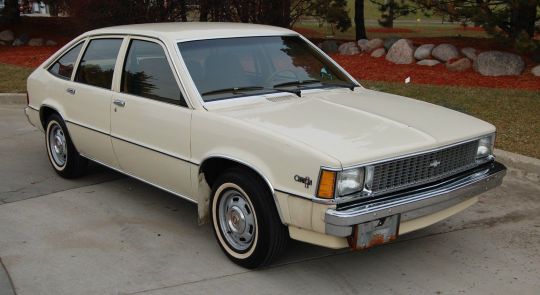
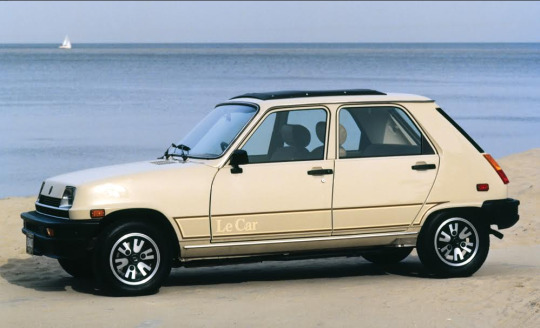


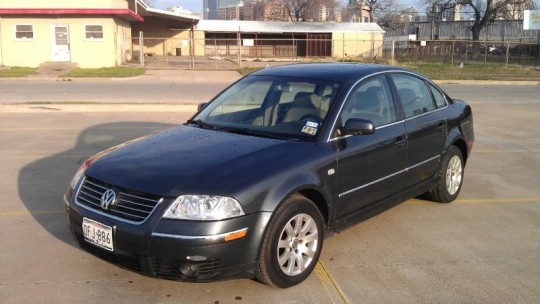


5th car - 1980 Chevy Citation
6th car - 1983 Renault Le Car
7th car - 1990 Subaru Justy
8th car - 2000 Volkswagen Jetta
9th car - 2002 Volkswagen Passat
10th car - 2003 Honda Element
11th car - 2005 Mercedes C320 (in 2008 the US economy collapsed and I lost this car)
0 notes
Text
The Renault 5 Turbo – The World's First Mid-Engined Hot Hatch Production Car
The Renault 5 Turbo – The World's First Mid-Engined Hot Hatch Production Car
#renault #renault5turbo #midengine #racecar #rally #racing #french #hothatch
This Renault 5 Turbo 1 is a rare original Marlboro livery team car that was driven in the European Championship R5 Cup – a race series that was a supporting event to the Formula 1 races around the European continent in the 1980s as well as the 24 Hours of Le Mans.
The 5 Turbo, sometimes known as the R5 Turbo, is one of the most unusual Renaults of the era, it was also the most powerful French…

View On WordPress
0 notes
Text
De Austria a Abu Dhabi, lo más destacado de la Fórmula 1 2020
Este domingo, con la victoria de Max Verstappen en el Gran Premio de Abu Dhabi, culminó la temporada de Fórmula 1 más corta desde 1966, con apenas 163 días. También fue la que tuvo menor cantidad de Grandes Premios (17) desde 2009. No obstante, este 2020 a pesar de la pandemia, nos trajo muchas emociones, nuevos circuitos (y algunos no tanto) y algunas sorpresas. Así que, sin más preámbulos, pasaremos a ver lo mejor y lo peor de este año y lo que esperamos de la máxima categoría para el futuro próximo.
Lo mejor:
Lewis Hamilton: Te puede caer bien o no, pero es indiscutible que el piloto de Mercedes pertenece al olimpo de la categoría reina, junto con Senna, Schumacher, Prost, Lauda y tantos grandes campeones. Igualó al kaiser como el piloto con más títulos (7) y le superó en victorias (95 del británico por 91 del alemán). Este año ganó 11 de las 16 carreras en las que participó (se perdió la penúltima fecha por haber contraído COVID-19) y aseguró su lauro cuando todavía quedaban tres carreras por disputarse. Es cierto que tiene con diferencia el mejor carro, pero como veremos más adelante, no sólo esto es garantía de victoria a este nivel.
Mercedes: No es casualidad que hayan ganado su séptima corona consecutiva, lo cual es un récord en cuanto a campeonatos sucesivos. Los alemanes ganaron 13 de las 17 carreras, obteniendo el 1-2 en cinco oportunidades, y sólo mostraron que eran humanos en el Gran Premio de Sahkir, con aquel error en la doble parada de Russell y Bottas bajo Safety Car. La estrella brilla más que nunca y parece que viene aún mejor para el próximo año.
Sergio Pérez: El mexicano logró el cuarto lugar en el mundial de pilotos, su mejor resultado en su amplia carrera de 10 años, coronado con aquella gran victoria en la penúltima fecha en el circuito perimetral de Bahréin, siendo el primer latino en ganar después de Pastor Maldonado en el GP de España en 2012. Todo esto con el hándicap de haberse perdido dos fechas por haber contraído COVID-19. Gran año para el de Guadalajara, que aún se encuentra sin asiento para el 2021.
McLaren: Este equipo histórico consiguió el tercer lugar en el campeonato de constructores. Tanto Carlos Sainz como Lando Norris terminaron consecuentemente en los puntos y sólo en Rusia se fueron en blanco, lo que demuestra su gran progreso a nivel de fiabilidad. Pienso que, si continúan por ese camino, McLaren volverá al sitio que le corresponde en la Fórmula 1. Ojalá sea pronto.
George Russell: Lewis Hamilton ya tiene un sucesor claro en el equipo Mercedes, Russell todavía milita en Williams, pero se tomó un “cafecito” en el equipo alemán con una gran actuación, donde solo un error del equipo y un pinchazo le quitaron la victoria. Superó con el peor auto de la parrilla la Q1 en 11 de 16 oportunidades, lo cual habla maravillas de su ritmo a una vuelta. Se perderá de vista.
Max Verstappen: El neerlandés, siempre que su auto se lo permitió, fue el único que dio algún tipo de pelea cuerpo a cuerpo con los Mercedes. Ya con 23 años, ha combinado su gran talento natural con la experiencia de seis años en la máxima categoría. Será un gran campeón, ojalá que los cambios de reglamento en 2022 le permitan pelear por ello.
Alternativas al triunvirato: El 17 de marzo de 2013, Kimi Räikkönen con un Lotus ganó el GP de Australia. Pasaron 2730 días para que un piloto de un equipo distinto a Mercedes, Ferrari y Red Bull ganara una carrera. Lo hizo Pierre Gasly en septiembre en Monza y luego “Checo” Pérez en Sahkir. Esto da esperanzas al futuro y a buscar una categoría más competitiva, sobre todo con el nuevo reglamento en 2022.
La FIA y Liberty Media: La pandemia les sorprendió cuando ya estaban los equipos instalándose en Melbourne para disputar el GP de Australia. Los organizadores se adaptaron y salvaron el año de gran manera con el calendario adaptado de la temporada 2020. El regreso de Ímola, Nürburgring y Estambúl fue un atractivo de sobra para los más nostálgicos, y la inclusión de Mugello, Portimão y el trazado externo de Sahkir brindó frescura al calendario.
Lo peor:
Ferrari: La Scudería no terminaba fuera del top-5 en el campeonato de constructores desde 1980. Muchos problemas de rendimiento y fiabilidad en la unidad de potencia, un paquete aerodinámico que ofrecía mucha resistencia en las rectas y pésimas decisiones estratégicas, hicieron que el Cavallino Rampante se quedara en el aparato este año. Esto también afectó a Alfa Romeo y Haas, sus equipos cliente, que apenas lograron terminar delante de Williams. Igual más pronto que tarde, Ferrari vuelva a galopar con fuerza por los primeros escalones del podio.
Valtteri Bottas: Si, terminó segundo en el mundial. Y si, es un gran escudero de Lewis Hamilton. Pero es un poco frustrante ver que el británico le pasa por encima domingo a domingo e incluso le cuesta adelantar autos más lentos que el Mercedes. Las pocas veces que logra ganar una carrera, lanza mensajes defensivos, como si todo el mundo estuviese en su contra. Su frase por radio, “To whom it may concern…”, es prueba de ello. Para colmo de males quedó en evidencia cuando Russell en su primera carrera con Mercedes y con un auto adaptado para Hamilton, lo adelantó una y otra vez. Tiene como tarea pendiente mejorar, y mucho, en 2021.
Alex Albon: El anglo-tailandés no pudo dar la talla con Red Bull y apenas pudo culminar séptimo en el campeonato. Muy lejos de su compañero Verstappen. A pesar de que repuntó en las últimas cuatro carreras, es probable que no continúe en su actual equipo. Una lástima, puesto que mostró algunas pinceladas de su talento.
Lo que esperamos para 2021:
La vuelta de Fernando Alonso es sin duda una de las más esperadas de los últimos años. El bicampeón español ha demostrado en otras categorías que aún tiene para competir a un alto nivel. Habrá que ver la competitividad que tendrá el equipo Alpine (nueva denominación que tendrá Renault).
El equipo Racing Point se transformará en Aston Martin, con Lance Stroll y Sebastian Vettel en sus filas, esperará superar la cuarta posición de este año.
Casi todos los asientos están confirmados para 2021, posiblemente se confirme la renovación de Lewis Hamilton con Mercedes en las próximas semanas. Con esto, sólo faltaría saber quien acompañará a Max Verstappen en Red Bull, con “Checo” Pérez y Nico Hülkenberg como principales candidatos y si Yuki Tsunoda será quien hará llave con Pierre Gasly en Alpha Tauri.
Por último, pero no menos importante, 2021 tendrá el debut con Haas de Nikita Mazepin y, sobre todo, de Mick Schumacher. Ojalá el hijo del kaiser y campeón de la Fórmula 2 de este año pueda tener una buena carrera y se sume a Verstappen, Russell, Norris y otros pilotos jóvenes como el futuro de la categoría.
Mientras tanto, volveremos al parc fermé, hasta marzo del próximo año donde, si la pandemia lo permite, volverá el gran circo con el Gran Premio de Australia.
0 notes
Photo

MATCHBOX SUPERFAST #21 YELLOW LE CAR RENAULT 5TL MADE IN ENGLAND BY LESNEY 1980 https://ift.tt/3hW6YCH
0 notes
Photo

🚚 #bixentef #tourisme #automobile #meteocar #vintage #legendcar #frenchcar #france 🇫🇷 #carspotters #2020 #renaultestafette #1980 #elf #cesaniauto #bagard #occitanie #GARD L'Estafette après 1972. Avec quelques légères modifications, nouveaux feux en décembre 1969, nouvelle calandre en tôle pour 1973), elle continuera jusqu'à son remplacement par le Trafic en 1980. Proposée en plusieurs versions: tôlée, à plafond surélevé, rallongée, bâchée, elle est déclinée aussi en une variante spécifique, « l'Alouette », entièrement vitrée et disposant de huit places assises qui équipera aussi la Gendarmerie nationale française. Renault en collaboration avec la Sabem (Société Anonyme Bois et Matériaux) plus connu sous le nom de Star et Autostar (Usine de Trémuson) équipera des plateaux-nu en version camping-car capucine (1978-1979) et en version Studio car (équipement amovible permettant de s'en servir comme utilitaire et en véhicule de loisirs). Le sens de rotation du « moteur Billancourt » est anti-horaire (côté distribution), tandis que le « moteur Cléon-Fonte » tourne dans le sens horaire, pour obtenir le même sens de rotation aux roues, le différentiel de la boîte de vitesses est retourné sur les versions avec le « moteur Cléon-Fonte ». Une version diesel à moteur Indenor fut étudiée, mais jamais produite en série. La société spécialisée en transformation de véhicules de séries Sinpar a produit un modèle à quatre roues motrices baptisé Castor, utilisant une cabine d'Estafette, mais n'ayant, en dehors de l'emploi de cette partie, que peu de pièces communes. Le constructeur roumain Dacia a produit sous licence une petite série de Renault Estafette, appelée Dacia D6. Ces voitures étaient réservées à la Poșta Română. Aux États-Unis, elle devait être commercialisée sous le nom de Petit-Panel dans sa version tôlée et Hi-Boy dans sa version surélevée, mais les services d'homologation américains ne délivrèrent jamais l'autorisation de mise sur le marché. @wikipedia (à Bagard) https://www.instagram.com/p/CA5MgIrDpST/?igshid=glj8y13sa0tl
#bixentef#tourisme#automobile#meteocar#vintage#legendcar#frenchcar#france#carspotters#2020#renaultestafette#1980#elf#cesaniauto#bagard#occitanie#gard
0 notes
Text
Two-time Grand Prix winner Patrick Tambay passes away aged 73
Former Ferrari, McLaren and Renault Formula 1 driver Patrick Tambay has died at the age of 73, his family announced on Sunday.
The Frenchman, who had been suffering from Parkinson's disease, won two Grands Prix duing a Formula 1 career that lasted almost a decade.
After impressive performances in Formula 2, he first stepped up to F1 for a one-off appearance for Surtees at the 1977 French Grand Prix, though he failed to qualify.
An immediate switch to the Theodore team was much more fruitful and he sealed three points finishes before the year was out – which was enough to earn him a seat at McLaren the following year.
Tambay is perhaps best remembered as a Ferrari driver, having taken his two F1 victories for the Scuderia
Five points finishes followed in 1978, but 1979 was a poor year for the team and for 1980 he left F1 for the Can-Am series, winning the championship for the second time.
He returned to F1 with Theodore in 1981, and then in 1982 he was drafted in by Ferrari to replace his friend Gilles Villeneuve, who had been killed at the Belgian Grand Prix.
He took his first victory at the German Grand Prix at Hockenheim, to add to a third place at Brands Hatch and an emotional second place on Ferrari home turf at Monza, while carrying Villeneuve's famous number 27 on his car. He delighted the tifosi again the following year by taking victory in the San Marino Grand Prix at Imola.
On Sunday, Ferrari paid tribute to their former driver, calling him "one of the true stars of the 80s".
Spells at Renault and Team Haas followed his time with the Scuderia, before he bowed out of Grand Prix racing for good, later returning to competition at Le Mans – where he finished fourth in 1989 – and in the Paris-Dakar race, achieving two top-three finishes.
After retiring from racing he worked as a commentator for French television and also served as deputy mayor of Le Cannet in southern France.
He was also godfather to 1997 world champion Jacques Villeneuve.
To learn more about Tambay and his racing career, tap hear to listen to his appearance on the Beyond The Grid F1 podcast from June, 2019.
via Formula 1 News https://www.formula1.com
0 notes
